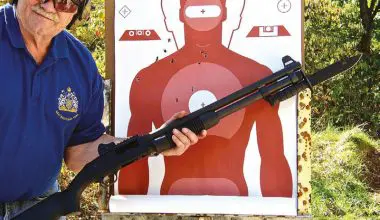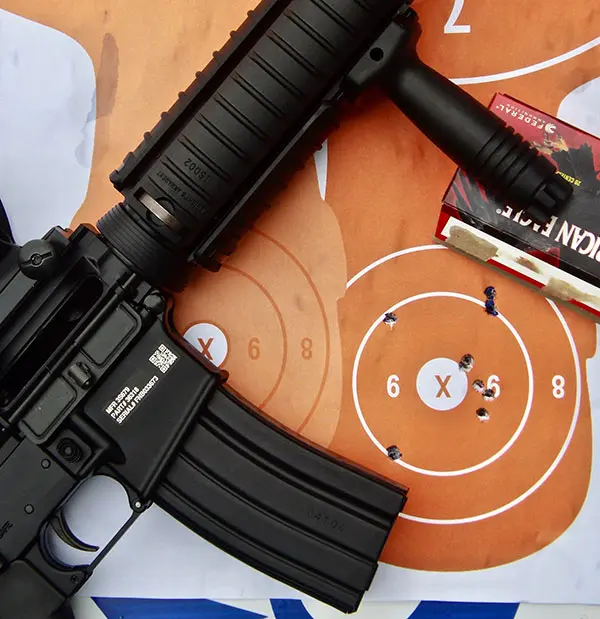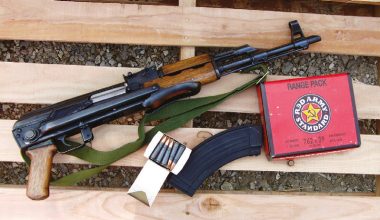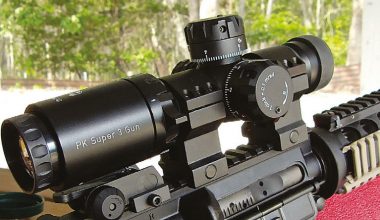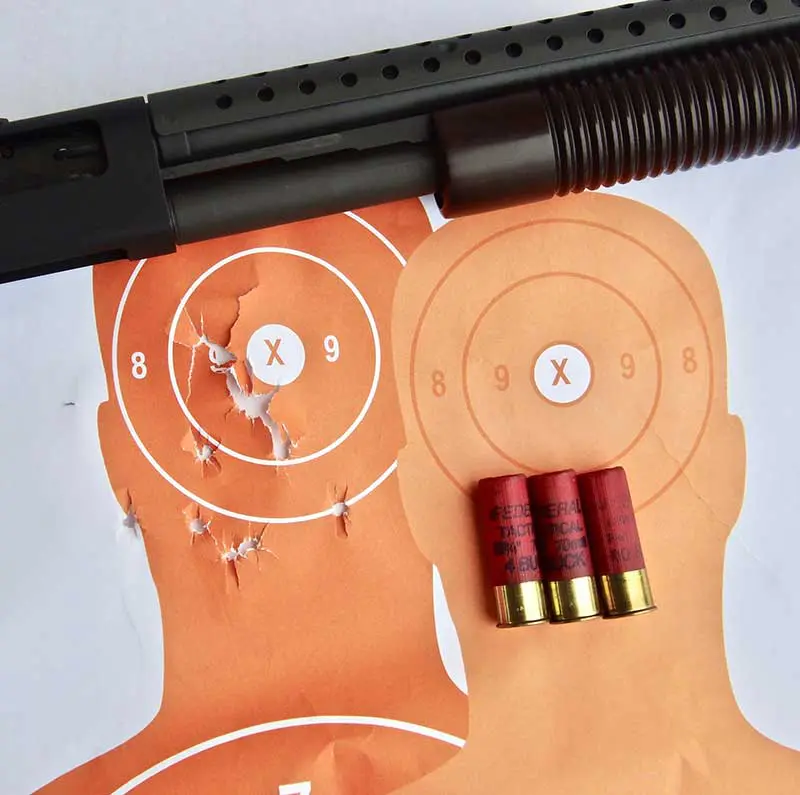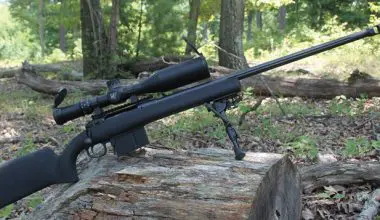Though the M1 Garand gave U.S. infantrymen a big advantage during World War II, there were calls for improvements. Many considered the Garand’s eight-round en bloc clip insufficient.
There were also some who felt a select- fire version of the M1 would be advantageous. Airborne units also wanted a more compact version of the M1 Rifle. Although Springfield Armory developed many experimental versions of the Garand incorporating these and other “improvements,” the M1 Rifle continued in service basically unchanged through the Korean War.
During the late 1940s and early 1950s, development of a replacement for the M1 focused on a multi-purpose weapon that would replace the M1 Rifle, M1 Carbine, M3 SMG, and BAR. Experiments with select-fire infantry rifles chambered for the .30-06 round showed that on full-auto, the rifle was uncontrollable unless it was as heavy as the BAR.
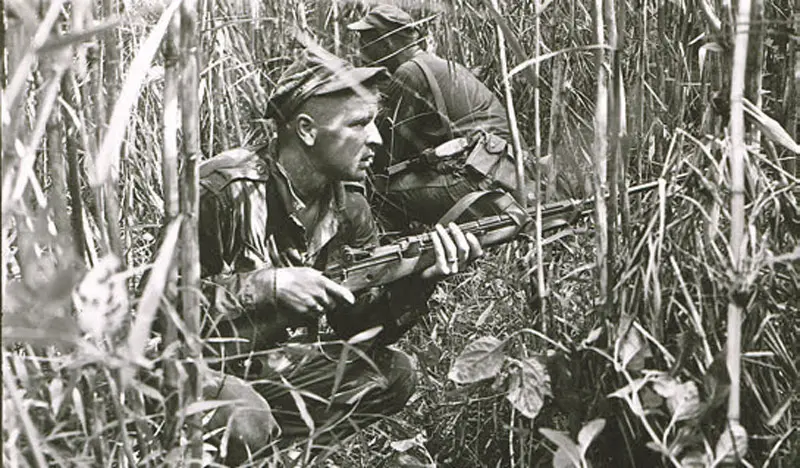
through the jungle. Photo: NARA
As a result, there was a program to develop a new service rifle cartridge, which would evolve into the 7.62x51mm NATO round. Once the cartridge was developed, rifle development was tailored to the round.
Eventually, a rifle designated the T44 underwent competitive Infantry Board Service Rifle Trials against the T48 rifle (the FN FAL) between 1952 and 1956, with the T44 being adopted as the M14 in 1957. Many believe the M14 came out ahead of the FN FAL because of NIH (not invented here) syndrome.
As adopted, the M14 was slightly longer and lighter than the M1. It used a 20-round detachable box magazine and offered select-fire capability. Initial production contracts were awarded to Springfield Armory, Winchester, and Harrington & Richardson. A later contract was awarded to TRW (Thompson- Romo-Woodridge). Many considered TRW M14s the best produced. In total, 1,376,031 M14s were produced.
Despite the optimism when the M14 was first issued in 1959, it did not fulfill the predictions of its versatility. The M3 SMG would remain on issue until at least the First Gulf War, while the M1 Carbine remained in use at least until the Vietnam War. By the mid-1960s, the M14 had replaced the M1 with frontline Army and Marine Corps infantry units.
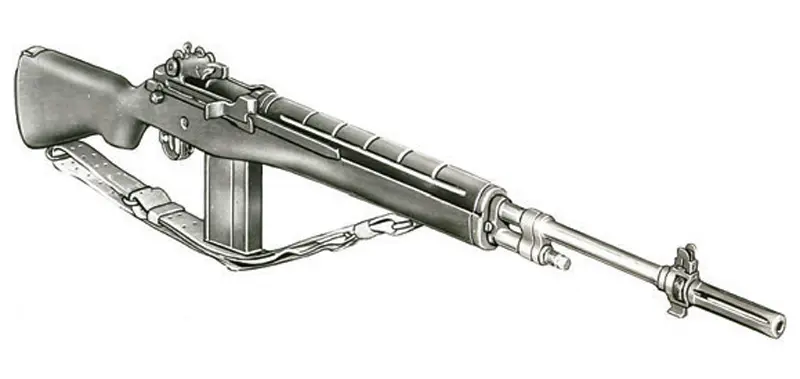
Standard M14 rifles proved extremely difficult to fire on full-auto and most were set permanently on semi-auto. For Vietnam service, the M14A1 was developed as a squad automatic weapon.
Among other features, the M14A1 incorporated a stock better designed for firing from the prone position, plus a pistol grip, folding foregrip, folding buttplate, and bipod. Trained troops could fire the M14A1 effectively.
Although the M14 had seen some service during U.S. operations in the Dominican Republic, its real baptism of fire was in Vietnam, where troop reactions were mixed. One problem was that the wood stocks tended to expand from moisture, while another was that the M14 was prone to rust. Although most troops liked the range and stopping power of the 7.62x51mm round, the standard combat load of five magazines did not give them sufficient ammunition for a sustained firefight.
These criticisms were welcomed by a group within the military establishment that wanted to adopt the ArmaLite 5.56x45mm rifle. With polymer stock and furniture and controllable on fullauto fire, the ArmaLite had advocates such as Gen. Curtis LeMay, USAF Chief of Staff, as well as many in the Army, who felt it was the perfect rifle for the Vietnam War.
Despite some early problems in Vietnam due to its lack of a chrome-lined bore and chamber and the type of powder used in the ammunition, the M16 rifle was acquired for U.S. troops beginning in 1962, with M14 production ceasing in 1964 after only five years of production.
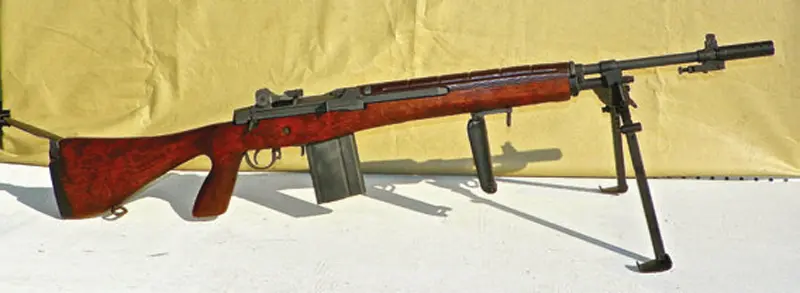
The M14 remained in use in Vietnam until 1965-66, when it was replaced by the M16, though some units retained M14s until later. The M14 remained standard for U.S. troops assigned to Europe, where the 7.62x51mm round was standard with other NATO countries until about 1970. Ironically, although the M14 had had a reputation for inaccuracy since early in its service, it became the basis for the XM21/M21 SWS (Sniper Weapon System).
In 1969, Rock Island Arsenal converted 1,435 National Match M14s by adding a Leatherwood 3-9X Adjustable Ranging Telescope sight and supplying National Match ammunition for use with the rifles. The initial stock was wood, but it was replaced with a fiberglass stock in 1975.
Although the M21 was replaced in 1988 by the M24 SWS, some remained in service during the First Gulf War and have continued in service through the War on Terror. More recently, Smith Enterprise Inc. built the M21A5, known as the Crazy Horse Rifle, on GI M14s receivers. Among upgrades are an adjustable trigger, extended bolt handle for use when wearing gloves, and cryogenic treatment of metal components so glass bedding is not necessary for the stock.
The War on Terror has seen the M14 used as a DMR (Designated Marksman Rifle), to bridge the gap between the infantryman and sniper by giving select marksmen a rifle capable of reaching farther on the battlefield. The number of M14s available for conversion to DMRs was surprisingly low: as of 2007, only 22,600 remained in Army service, with another 87,462 in storage. Still, there were plenty for immediate needs.
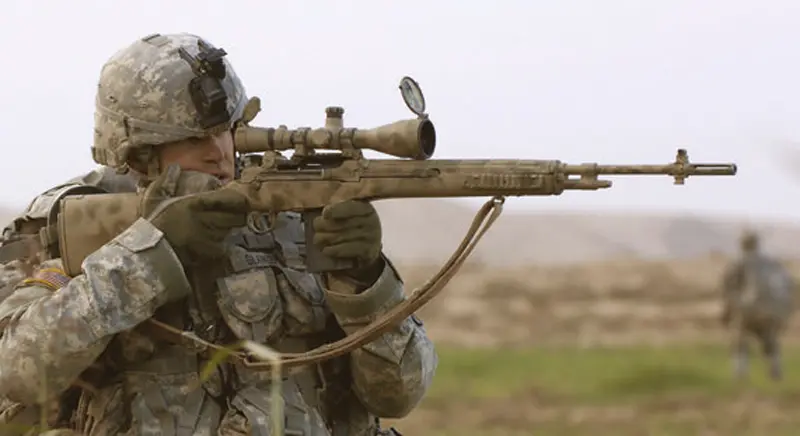
The USMC, which has always stressed marksmanship, saw the need for a DMR. Like previous Marine precision rifles, the DMR was built to match specifications by the USMC Precision Weapons Shop at Quantico, Virginia.
An M14 action was bedded in a Mc- Millan Tactical M2A fiberglass stock with pistol grip and adjustable cheek piece. It has a Harris bipod and 22-inch Krieger match-grade barrel. Either an Unertl M40 or Leupold & Stevens Mk 4 ten-power scope is mounted on a special MIL-STD-1913 rail. The Marine DMR can also mount the AN/PVA-10 or AN/PVA-17 Night Vision Scope. DMRs were issued M118LR 7.62x51mm ammo.
The Marine Corps replaced the DMR in 2008 with the M39 EMR (Enhanced Marksman Rifle), which is similar to the DRM but has a metal stock that allows adjustment for length and height. Also used on the M39 are a sturdier Harris bipod and the M8541 Scout Sniper Day Scope—a Schmidt & Bender 3-12X50mm PM II.
Various other precision versions of the M14 have been deployed, including the MK14 Model 0 EBR (Enhanced Battle Rifle) developed for the SEALs. An enhanced M14 rifle with good optics and good ammunition, plus a detachable 20-round magazine that allows faster and more continuous engagement, has given the M14 a new lease on life.
Since the various types of enhanced M14s have proven especially useful in Afghanistan and to a lesser extent Iraq, it is likely that they will remain in U.S. military armories for some years to come. The M14 has remained in use for a few other specialized tasks as well. U.S. Navy ships use M14s for line throwing and security duties. M14s serve in high-profile ceremonial duties such as with the 3rd U.S. Infantry Regiment, which provides ceremonial guards at the Tomb of the Unknowns.
Though the official service life of the M14 was only about a decade, it is still saving American lives on the battlefield more than half a century after its introduction, as well as honoring those who gave their lives.
